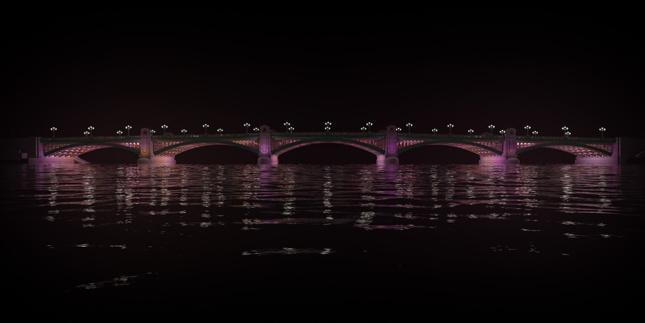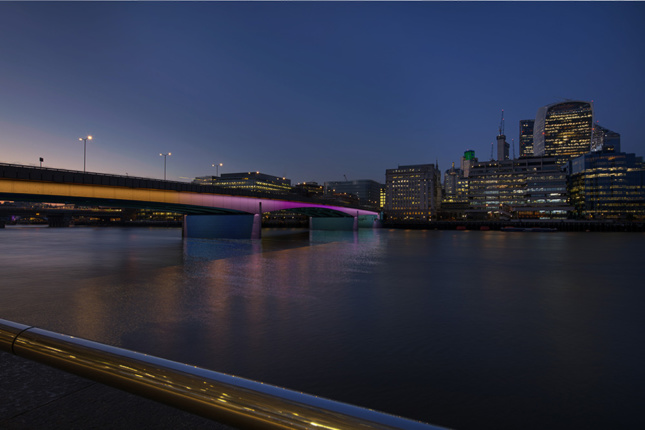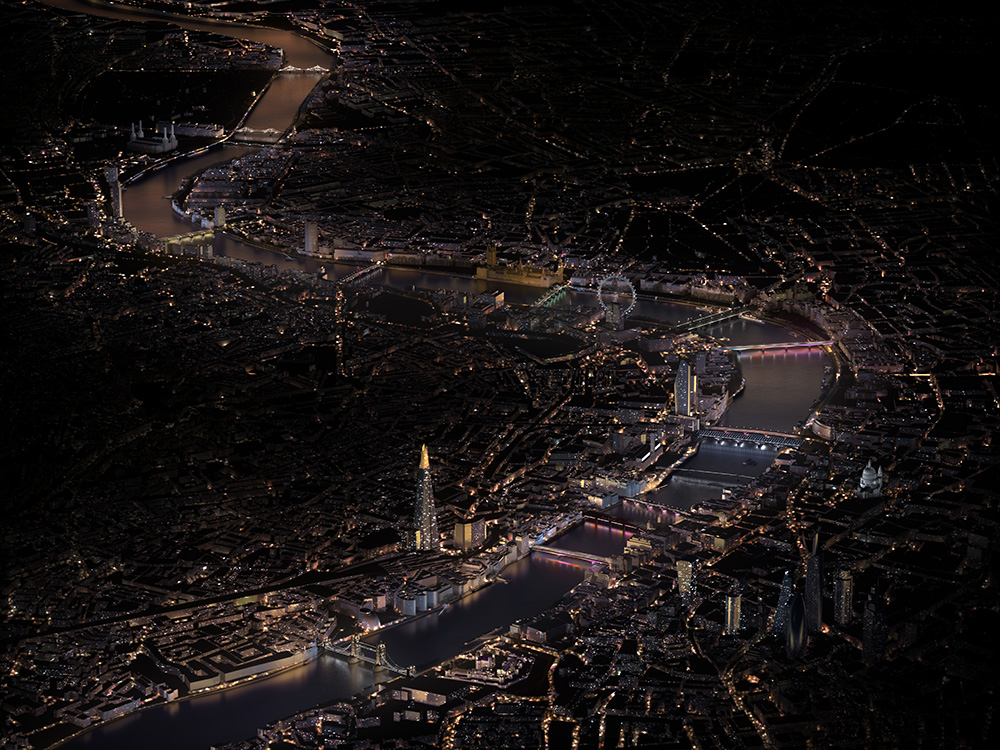Londoners will see the Thames in a whole new light beginning this summer. In a collaboration between British architecture firm Lifschutz Davidson Sandilands (LDS) and U.S. artist Leo Villareal, up to 15 London bridges—including UNESCO World Heritage sites—will be outfitted with an array of new lighting for at least the next decade. The project, called Illuminated River, will highlight the bridges’ unique sculptural and environmental qualities, breathe new life into urban spaces, and connect communities all along the waterway.
This summer, Illuminated River will begin with four bridges—Southwark, Cannon Street, London and Millennium bridges—getting lit up. The massive installation will continue to be built over the next few years, with a further section to be completed in 2020, and an aimed completion date of 2022.
The collaboration between artist and architect was natural, said LDS’s Alex Lifschutz in a statement. “Architects collaborate with many different species of being. Indeed, architects are many species of being,” he said. Villareal, who has previously illuminated bridges like San Francisco’s Bay Bridge, felt similarly. “We rely on each other’s views to achieve this great ambition,” Villareal said. “The collaboration is so far a success because it is based on trust and the respect of one another’s expertise and unique vision.”
The architects and artist worked together to use the latest in LED technology, along with custom software, to outfit the bridges to produce an effect that is, according to Villarreal, “gently kinetic.” While, Lifschutz pointed out, there’s been a “huge revolution” in LED technology—in terms of efficiency, scalability, cost, color, control, and other attributes—in the wrong hands LED fittings are “a very potent destructive mechanism.”
Lifschutz explained: “LED fittings are maybe five times more efficient than standard fittings. People have thought, ‘Well, that’s fantastic. We’ll save a lot of energy and the world will be all the better for it. And climate change will be that much further away.’ The unintended consequence of this high efficiency is that people use more of them. And the world has become brighter and jazzier as a result, which is a great shame.” LDS and Villareal’s answer is to use light “very judicially.”
The architects and artist did a huge number of studies using the latest laser techniques. While the top surfaces of bridges are “straightforward,” the undersides—with all their supports and trusses—are “incredibly interesting and abstract,” said Lifschutz. “Each bridge has its own character,” he said. “It’s like having 15 children—not that I do—but each one has a different character and each one deserve a different way of talking about it, of dealing with it.”

They considered how to light the bridge as both a piece of art and architecture, working where the two intersected to manage the relationship between structure, form, and function in order find the best places to provide light and fix fittings, all while not affecting the structure, especially on the “very precious bridges.”
“Both [Villareal and I] have a technical background in the color of light, the spread of light, the way in which light falls on surfaces, and the kinds of fittings or kinds of technical fittings that are available to make the magic happen,” explained Lifschutz. “And light is very magical, obviously.”
Additionally, the river is not only a site of architectural life and preservation, but also of ecological vibrancy and conservation. The team had to do a number of ecological studies, some reportedly more thorough and substantive than those that had been done before, and research the effect of light on the creatures living in the Thames. “If you have a line of light that lies across the water, fish generally don’t like to cross that,” explained Lifschutz. “It may affect spawning patterns in the shoreline and so on.” In their research, they discovered much of the existing lighting on London’s bridges was already detrimental to wildlife. “[The lighting] is spraying light everywhere; it’s the wrong color.” Many naturally uncommon colors and color temperatures—many of which are currently in use before the team’s intervention—negatively affect the wildlife swimming below.

The competition to develop the river project was supported by the office of Mayor Sadiq Khan, received over 105 entries, and was done in collaboration with over 100 local organizations on and around the river. It required numerous approvals to work with listed structures. The local groups have “mostly been hugely enthusiastic,” reported Lifschutz.
And it is apt that the project is titled Illuminated River—working at a scale Lifschutz calls “epic,” there will be integration across all 15 bridges to create a cohesive, unified effect and artwork “painting with light,” as Villareal put it, across the whole of London’s main waterway.
“We hope Illuminated River will open up the riverside public realm spaces for people to linger, appreciate the enhanced architecture of the bridges, cultivate new opportunities, and encourage tourists to come to London and enjoy nightlife activities,” said Villareal. “It will celebrate the unique character and the amazing landmarks of the city through art.”
For more on the latest in AEC technology and for information about the upcoming TECH+ conference, visit techplusexpo.com/nyc/.
